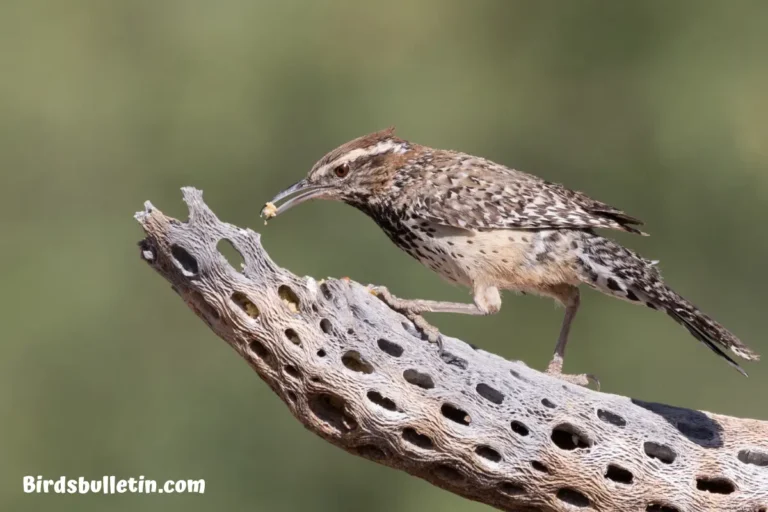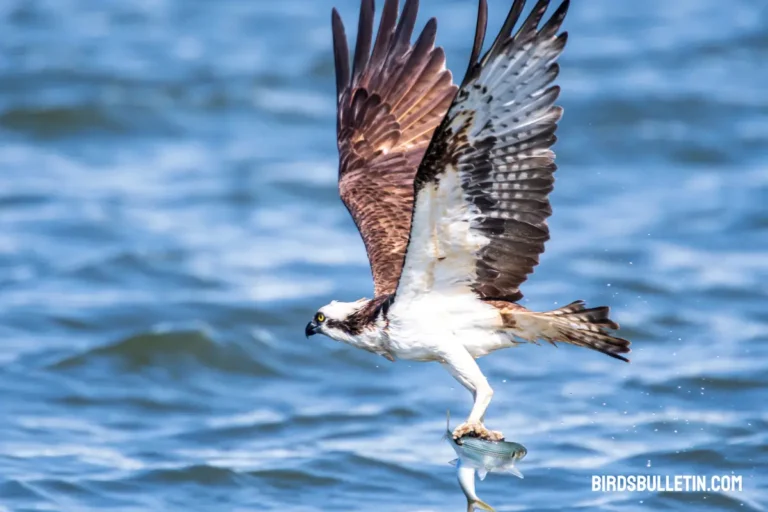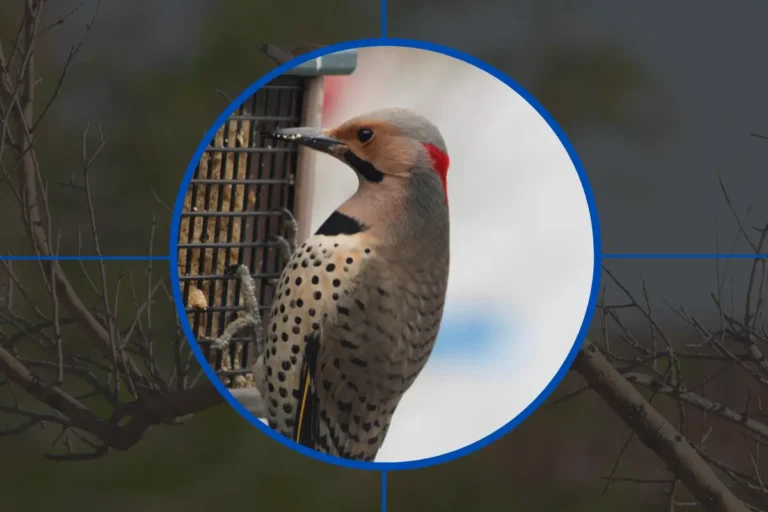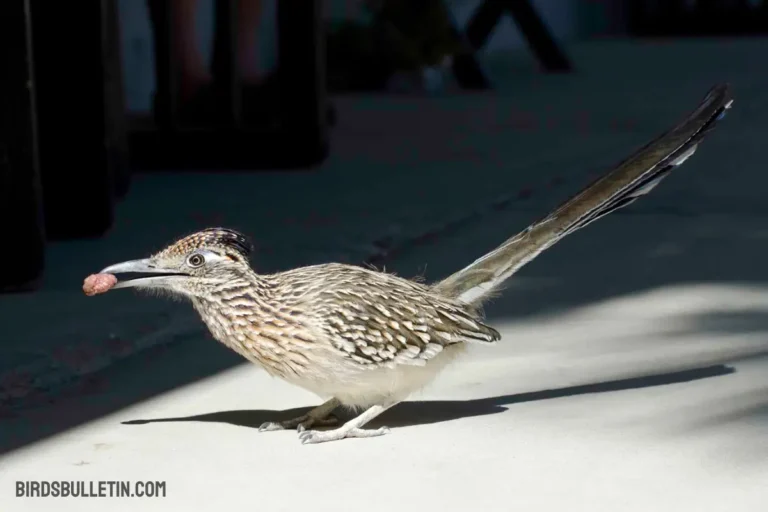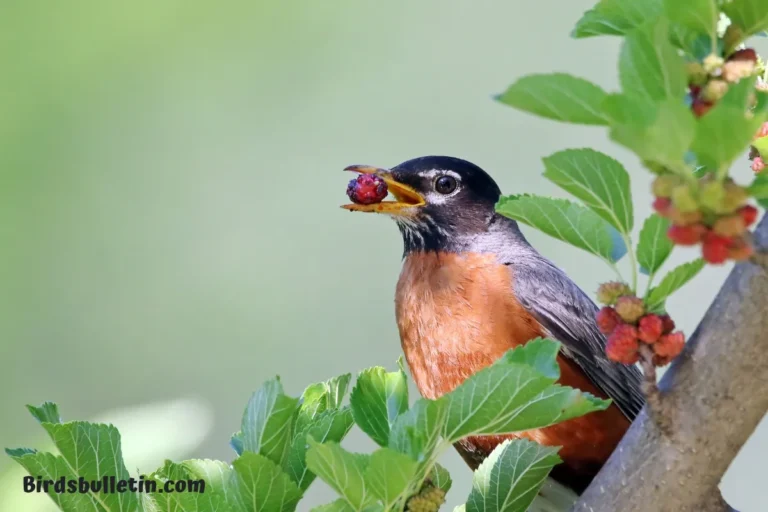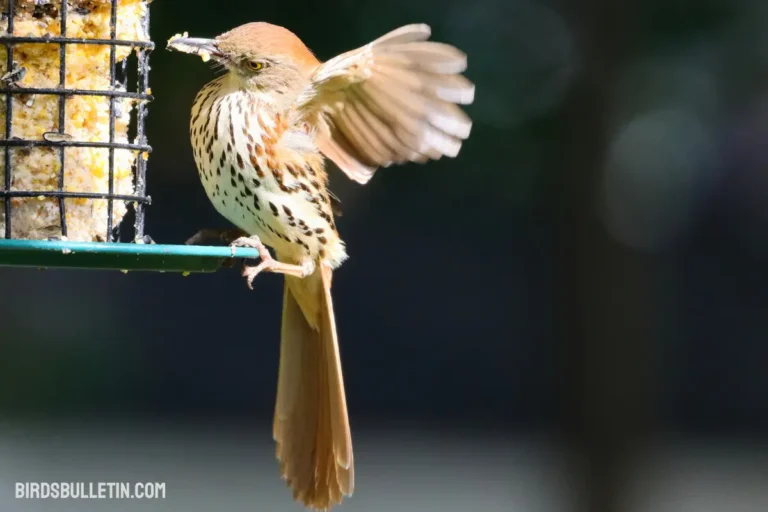What Does the Brown Pelican Eat?
With its huge bill and expandable throat pouch, the Brown Pelican is a specialized feeding machine, evolved to catch fish with stunning diving precision. The Brown Pelican is found along warm coastal waters in the Americas and specializes in catching small fish to meet its dietary needs.
Its oversized bill and pouch allow it to plunge-dive from heights up to 60 feet to engulf fish and water in its pouch. It primarily feeds on fish caught through dive fishing, but also occasionally eats other marine creatures.
In this overview article, we’ll examine the unique adaptations and strategies Brown Pelicans use to catch their prey, along with details on their favored foods and how their diet changes across seasons and life stages.
Want to learn more about birds’ food and diet:
Favorite Prey Species
Brown Pelicans have a varied fish-based diet targeting whatever small schooling species are abundant in nearshore waters during each season. Here are some of their favorite prey items:
| Food | Details |
|---|---|
| Fish | Brown pelicans primarily eat fish such as mullet, menhaden, anchovies, herring, and more. Fish make up over 90% of their diet. |
| Crustaceans | Brown pelicans opportunistically eat crustaceans like shrimp, crabs, and crayfish. |
| Amphibians | Frogs, toads, and salamanders may occasionally be eaten. |
They also opportunistically eat crustaceans like shrimp, crab larvae, and amphibians like salamanders when available. The most suitable fish prey are small schooling species found near the water’s surface, typically 6 inches long or less.
Hunting and Feeding Strategies
Brown Pelicans have evolved several specialized hunting strategies and adaptations to catch fish, including:
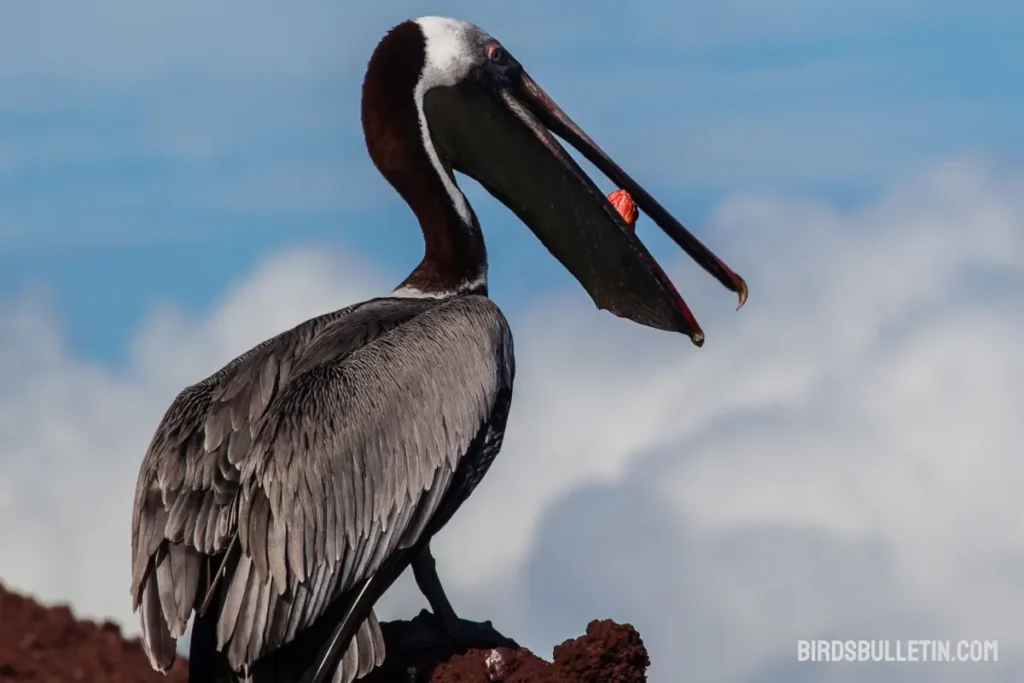
- Scanning for fish schools from vantage points or while soaring at heights up to 60-70 feet.
- Plunge diving straight down into the water to catch prey with their throat pouch, from heights as high as 60 ft.
- Puncturing the surface from the impact before the pouch fans open underwater to engulf fish and water.
- Draining water from the pouch before swallowing fish caught inside. Sometimes catching over a dozen fish in one pouch.
- Working together to herd fish into dense balls near the surface to improve hunting success through coordinated plunging.
- Robbing caught fish from the pouches of other pelicans.
- Catching flying fish flushed by tuna in open water. They may also eat injured fish floating on the surface.
Changes in Diet by Season
In warm areas, Brown Pelicans can feed year-round. But those that migrate show seasonal shifts in prey availability and locations:
- In prime northern breeding zones in summer, small schooling fish become abundant nearshore, allowing successful breeding.
- In winter, they shift south where fewer fish prompt more scavenging and opportunistic feeding.
- Prey in estuaries and mangroves is more available in winter than in the open ocean.
- Their huge pouches become reduced in winter when not needed for feeding chicks.
- Some wintering grounds may have limited prey, requiring supplementing with scraps from fishing boats.
Baby Pelican Diet
Baby pelicans hatch after an incubation of 28-32 days. Parents feed chicks by regurgitating food into their gaping mouths. Initially, chicks are fed pre-digested food but are quickly weaned onto whole fish and some marine invertebrates.
For about 2 months the young are fed over 150 lbs of fish until they fledge. Both parents continually deliver food items to meet demand. Once independent, juvenile pelicans must perfect plunge diving to feed themselves.
Frequently Asked Questions
01. Do they only eat live fish or carrion too?
They predominantly catch live prey. But injured, dead, or discarded fish washed up are opportunistically scavenged as well.
02. What time of day do they normally feed?
Early morning and late afternoon are peak feeding times. However, feeding activity depends greatly on tidal and diurnal fish movements.
03. Do Brown Pelicans eat only fish?
While fish constitute the majority of their diet, Brown Pelicans occasionally consume crustaceans like crabs and shrimp. In certain situations, they may also prey on small amphibians or invertebrates.
04. How do Brown Pelicans avoid injury during plunge-diving?
Brown Pelicans have air sacs beneath their skin, which act as cushions, helping them absorb the impact of their dives. Additionally, they extend their wings slightly to slow down before hitting the water, minimizing the risk of injury.
Final Word
With its expansive throat pouch, the Brown Pelican is exquisitely adapted for a fish-based diet using plunge-diving to catch prey. It targets whatever small schooling fish are seasonally abundant in warm coastal waters across the Americas.
Protecting marine ecosystems and fish populations will help ensure the future of these iconic seabirds. Where brown pelicans soar and dive is a sign of a healthy coastal environment.
References
- Nelson, J. B. (2005). Pelicans, cormorants, and their relatives: The Pelecaniformes. Oxford University Press.
- Shields, M. (2014). Brown pelican (Pelecanus occidentalis). Birds of North America Online, Cornell Lab of Ornithology.
- Walters, J. (2020). Brown pelican: Expert fisher & free-spirited seabird. PressLogic.
- National Audubon Society. (n.d.). Brown Pelican. Retrieved from https://www.audubon.org/field-guide/bird/brown-pelican.


